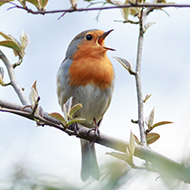The shortcuts make communication more effective.
Researchers have discovered that birds abbreviate birdsong to improve the efficiency of their communication.
The study, from the University of Manchester and Chester Zoo, revealed that birds seem to follow Zipf’s Law of Abbreviation (ZLA).
Through ZLA, more frequently used sounds tend to be shortened to make communication more efficient. It has been found to be used in all human languages.
However, although previous studies have suggested that animal communication follows ZLA, it has been difficult to identify it in birdsong. This is because birds have a smaller range of dialogue than humans, producing only a few dozen sounds.
To analyse patterns in the birds’ communications, researchers utilised a new open-source computational tool called ZLAvian.
Using ZLAvian, the team examined more than 600 songs from 11 bird populations, spanning seven different species. The tool compared real-world observed patterns to simulated patterns, as it analysed to see if ZLA was present.
Although individual populations didn’t show consistently clear signs of ZLA, there was a stronger pattern when the data was combined. This revealed that more frequently used birdsong was shorter on average.
The team believes that further studies across a broader set of bird species will confirm their findings.
Tucker Gilman, senior lecturer at the University of Manchester and lead author, said: “We know that birds and humans share similarities in the genes and brain structures involved in learning to communicate but this is the first time we’ve been able to detect a consistent pattern of ZLA across multiple bird species.
“There’s still a lot more work to be done but this is an exciting development.”
Rebecca Lewis, conservation scientist at Chester Zoo, added: “Our research has taught that it’s important to look across a wide range of species when looking for language patterns and we hope ZLAvian will make it easier for other researchers to explore these patterns in more birds but also other animals in the future.”
The full study can be found in the journal PLoS Computational Biology.
Image © Shutterstock






 Zoetis has launched a new survey to identify management techniques for Equine Herpes Virus (EHV).
Zoetis has launched a new survey to identify management techniques for Equine Herpes Virus (EHV).
